Snowblower won’t start – 4 easy DIY fixes
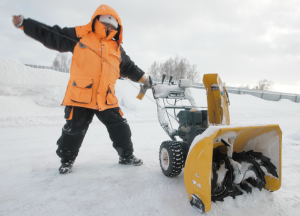

We have 4 quick and easy DIY tips that can save the day when your snowblower won’t start in the dead of winter. These troubleshooting steps can help you get your snow blower or snow thrower running again in no time. View our video then read on to find additional snowblower advice and answers to frequently asked questions about snowblower starting problems.
1. Drain and refill the gas tank with fresh fuel
The snowblower engine may start with stale fuel when it’s warm, but everything needs to be right when starting the engine in cold winter weather. Bad gasoline is one of the leading causes of snowblower starting problems.
In a well-ventilated area, drain the old gas out of the tank and fill it up with fresh gas. The engine may start right up with fresh fuel.
2. Replace the fuel filter
The engine’s carburetor won’t get any gas if the fuel filter is clogged. You typically can’t tell whether a fuel filter is clogged by visually inspecting it.
You can check to see if a fuel problem is preventing the snowblower from starting by conducting this test:
Pull off the spark plug wire and remove the spark plug.
Spray a short burst of starter fluid into the cylinder through the spark plug hole.
Reinstall the spark plug and spark plug wire.
Try to start the snowblower engine.
If the engine starts and runs briefly then quits, you’ve eliminated many other possible causes of the engine starting failure and narrowed down the problem to a fuel supply issue.
Replacing the fuel filter when the engine starts briefly using starter fluid may fix the fuel supply issue.
If replacing the fuel filter doesn’t fix the fuel supply problem, then you’ll likely need to rebuild or replace the carburetor. Getting to the carburetor in many snowblowers is a fairly complicated repair because the carburetor is behind a shroud. You can follow the steps in our How to rebuild a snowblower carburetor repair guide/video to rebuild the carburetor. You can also replace the carburetor instead of rebuilding it if the carburetor is so clogged that cleaning it doesn’t restore the fuel supply to the engine.
3. Replace the snowblower fuel line
A crack in the fuel line will cause the carburetor to just suck air in through the opening caused by the crack in the fuel line instead of drawing fuel in from the gas tank.
The fuel line is typically exposed in many snowblower engines so it’s easy to check. Be sure that you’re in a well-ventilated area when checking the fuel line for a crack. Replace the fuel line if it’s cracked. Follow the easy DIY steps in our Replacing a Fuel Line on a Snowblower video to install a new fuel line.
4. Replace the spark plug
If you pulled the spark plug out to spray starter fluid into the cylinder when following the above troubleshooting tip, then you already know whether it’s fouled or damaged. If you didn’t already pull out the spark plug, remove it and inspect for damage.
Replace the spark plug if it’s fouled or damaged.
Check the spark plug gap if the electrode isn’t fouled. You’ll also need to set the spark plug gap properly when installing a new spark plug. Follow the directions in the owner’s manual for your snowblower to set the proper spark plug gap. The gap for the spark plug in many common snowblower engines is 0.020-inch – 0.030-inch.
For more tips on checking the spark plug, read our How to check and replace a snowblower spark plug article (with video).
When these easy DIY tips don’t help you get your snowblower started, you may need to schedule service by a Sears Technician. Our tech can visit your home and quickly fix your snowblower so you can get back to clearing snow.
Frequently asked questions about snowblower starting problems
Can I use starter fluid in my snowblower engine?
Check the owner’s manual for your snowblower or your snowblower’s engine regarding the use of starter fluid. For most snowblower engines, occasional use of starter fluid won’t harm any engine parts. Excessive use of starter fluid in a snowblower engine can cause damage or wear to some engine parts.
Why does my snowblower engine run for only a few seconds then stop?
When your snowblower engine only runs for a few seconds and then dies, the problem is often caused by a gummed-up carburetor. The carburetor mixes air with fuel in the proper proportion to produce a combustible gas. That gas/air mixture then moves into the cylinder where the piston compresses it and the spark plug ignites it.
The engine probably starts because gas enters the cylinder when you press the primer bulb. The engine dies if a clogged carburetor can’t properly mix gas and air to supply the cylinder with combustible fuel.
Replacing a clogged carburetor is the quickest and easiest way to fix the snowblower. Finding the right replacement carburetor for some snowblowers is challenging. Use the carburetor part chart in our Find the right carburetor assembly for a Craftsman snowblower, tiller or log splitter article to accurately find the correct replacement carburetor for your snowblower if necessary.
To save money, you can rebuild the carburetor to fix this problem instead of replacing the entire carburetor. The carburetor rebuild kit has parts and gaskets needed to refurbish a clogged or worn carburetor.
How do I fix a seized snowblower engine?
Check the simple issues first. Check the controls to make sure that the auger drive is disengaged so the engine pulley spins freely.
Next, pull the spark plug out and see if the engine spins with the spark plug removed. If the engine spins with the spark plug removed, then fluid inside the cylinder was blocking cylinder movement. Reinstall the spark plug and see if the engine starts. It will likely sputter and create lots of smoke as it burns residue out of the cylinder.
If these initial troubleshooting tips don’t help, then you may be able to free up a seized piston by following these steps:
Remove the spark plug.
Drain the engine oil.
Drain gas from the fuel tank (in a well-ventilated area).
Add penetrating oil into the spark plug hole. Tilt the snow blower on its side to distribute the penetrating oil inside the cylinder. Use a helper if necessary when tilting the snowblower. Let the penetrating oil soak inside the cylinder for 24 hours.
Try to rotate the flywheel to free up the seized piston.
If you can free up the seized piston, fill the engine oil and fuel tank. Start the engine. Expect heavy smoke to pour out of the muffler as the penetrating oil burns off inside the cylinder.
If these tips don’t help you free up a seized snowblower engine, then you’ll likely need to have the snowblower serviced by a technician.
Schedule professional maintenance and a tune-up for your snowblower to prevent starting problems and other failures
To prevent snowblower problems and keep your machine in top shape, schedule annual maintenance and tune-up service from Sears Home Services. During the maintenance and tune-up service, the Sears Technician will:
Check the ignition system, carburetor, throttle, and choke controls.
Clean engine cooling fins.
Change the engine oil.
Check the recoil starter or electric starter.
Lubricate moving parts such as pivot points, cables, auger shaft, and drive plate zerk.
Lubricate, inspect, and adjust drive belts and/or chains as applicable.
Test overall operation of equipment and ensure that all safety features are fully operational at the time of service.
Keeping your snowblower in top shape with an annual maintenance and tune-up will help prevent unexpected breakdowns during the winter so you can keep clearing snow smoothly all season long.
Symptoms for gas snowblowers
Choose a symptom to see related snowblower repairs.
Main causes: punctured tire, damaged rim…
Main causes: dirty carburetor, stale fuel…
Main causes: dirty carburetor, clogged fuel filter, dirty spark plug, incorrect valve lash, leaky engine gaskets…
Main causes: stale gas, clogged carburetor, clogged or broken fuel line, dirty spark plug, bad rewind starter, incorrect…
Main causes: snow build-up in chute, chute drive mechanism failure, bad chute control assembly…
Main causes: loose drive clutch cable, damaged drive clutch cable, worn friction disc, scraper blade scraping the ground…
Main causes: clogged chute, damaged auger blades, broken shear pins, worn auger belt, damaged gear case, engine problems…
Main causes: broken shear pins, worn or loose auger drive belt, auger drive cable failure, damaged auger, bad gear case…
Things to do: replace the spark plug, change the oil, rebuild the carburetor, adjust valve lash, adjust or replace the b…
Repair guides for gas snowblowers
These step-by-step repair guides will help you safely fix what’s broken on your snowblower.

How to replace a snowblower fuel filter
Replace the fuel filter on your snowblower if it's clogged or damaged.…
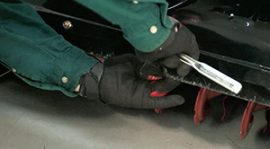
How to replace a snowblower shave plate
Follow the 7 easy steps in this repair guide/video to replace a worn out shave plate on your snowblower.…
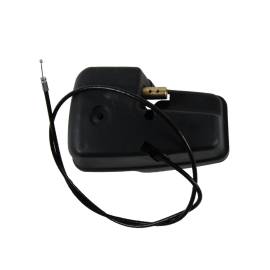
How to replace a snowblower chute control gearbox assembly
Replace the chute control gearbox on your snowblower if it's stripped or damaged.…
Articles and videos for gas snowblowers
Use the advice and tips in these articles and videos to get the most out of your snowblower.
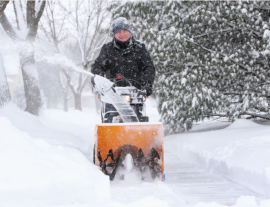
Learn the steps to take to adjust and maintain your snowblower so it lasts longer.…
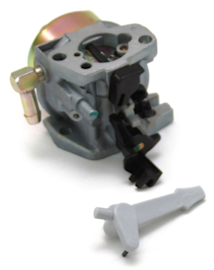
This chart will help you find the right carburetor for your Craftsman snowblower, tiller or log splitter.…

Learn how to replace the chute control assembly and gearbox if the chute on your snowblower won't turn.…